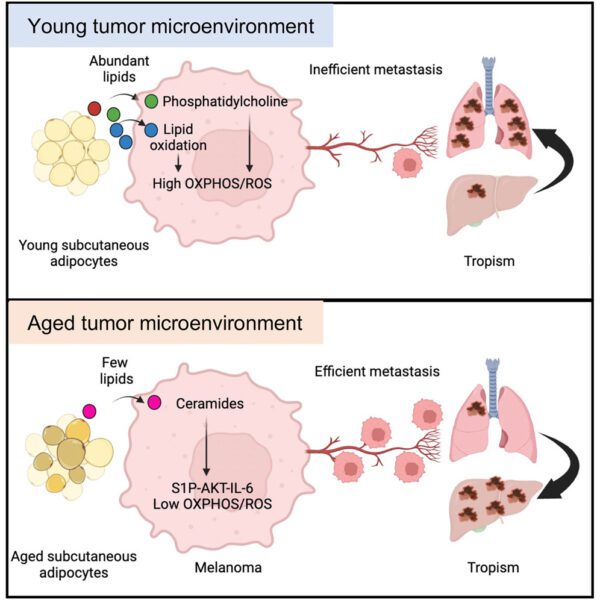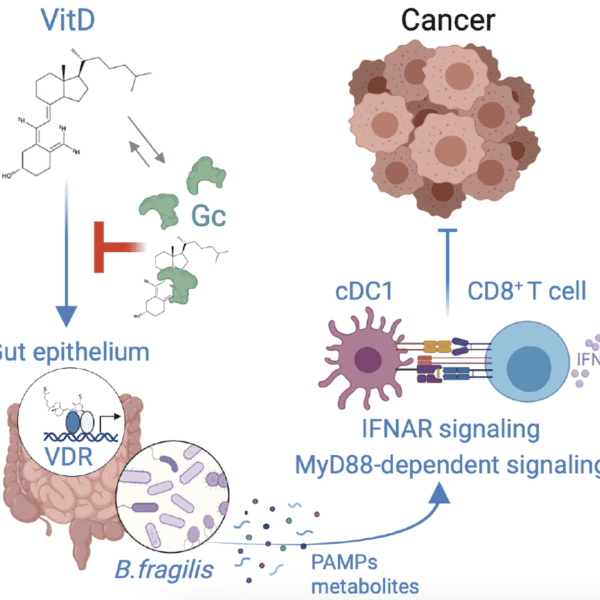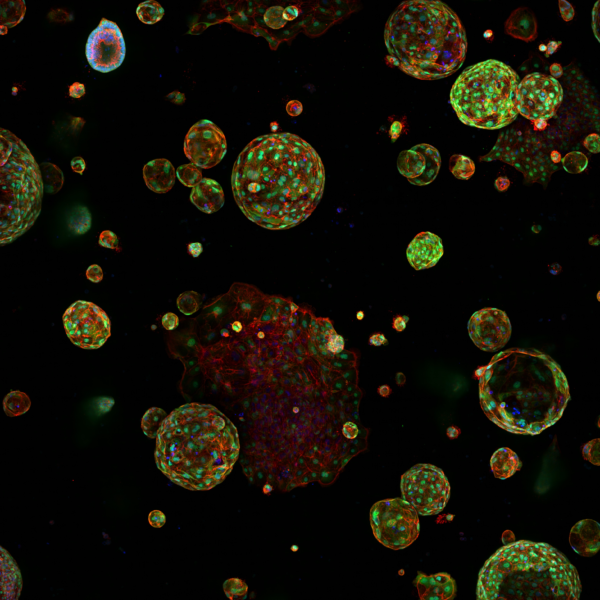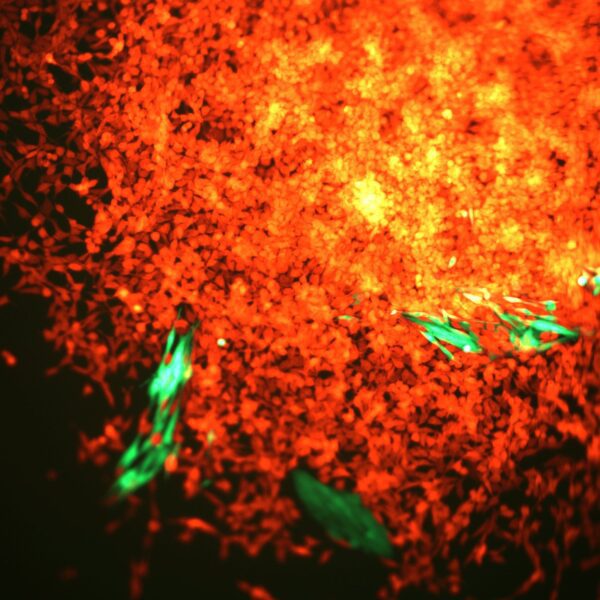Article highlights & insights
Cancer cells adapt to signals in the tumor microenvironment (TME), but the TME cues that impact metastasis and tropism are unknown. We show that stromal lipids from
young adipocytes are taken up by melanoma cells, and lipids increase melanoma oxidative phosphorylation (OXPHOS) and oxidative stress, which decreases metastatic
burden. In contrast, the aged TME provides fewer lipids, leading to lower OXPHOS and higher metastatic capacity.
Young adipocytes transfer phosphatidylcholine (PC) to melanoma cells, where PC upregulates PI3K/AKT and mitochondrial OXPHOS. Melanoma cells with high OXPHOS predominantly seed the lung and brain, but do not colonise the liver, and decreasing oxidative stress with antioxidant supplements shifts tropism from the lung to the liver. In contrast, although the aged stroma has fewer total lipids, it has more ceramides, which activate the S1P/STAT3/IL6 signalling axis to direct melanoma liver tropism. Inhibiting OXPHOS in the young stroma and blocking IL6 receptor in the aged stroma reduces the age-specific patterns of metastasis imposed by stromal lipids.
Significance
Young skin adipocytes provide more lipids and phosphatidylcholine to melanoma cells, which imposes PI3K/AKT signalling, high OXPHOS and oxidative stress, which decreases metastatic burden to the liver. Aged skin contributes ceramides, which activate S1P/STAT3/IL6 signalling and increasing metastasis, predominantly to the liver.
Highlights
• Young skin adipocytes provide lipids to melanoma cells to increase OXPHOS and ROS
• Lipid availability dictates metastatic efficiency and tropism
• The aged skin provides fewer lipids, which promotes melanoma liver metastasis
Cancer cells adapt to signals in the tumor microenvironment (TME), but the TME cues that impact metastasis and tropism are unknown. We show that stromal lipids from
young adipocytes are taken up by melanoma cells, and lipids increase melanoma oxidative phosphorylation (OXPHOS) and oxidative stress, which decreases metastatic
burden. In contrast, the aged TME provides fewer lipids, leading to lower OXPHOS and higher metastatic capacity.
Young adipocytes transfer phosphatidylcholine (PC) to melanoma cells, where PC upregulates PI3K/AKT and mitochondrial OXPHOS. Melanoma cells with high OXPHOS predominantly seed the lung and brain, but do not colonise the liver, and decreasing oxidative stress with antioxidant supplements shifts tropism from the lung to the liver. In contrast, although the aged stroma has fewer total lipids, it has more ceramides, which activate the S1P/STAT3/IL6 signalling axis to direct melanoma liver tropism. Inhibiting OXPHOS in the young stroma and blocking IL6 receptor in the aged stroma reduces the age-specific patterns of metastasis imposed by stromal lipids.
Significance
Young skin adipocytes provide more lipids and phosphatidylcholine to melanoma cells, which imposes PI3K/AKT signalling, high OXPHOS and oxidative stress, which decreases metastatic burden to the liver. Aged skin contributes ceramides, which activate S1P/STAT3/IL6 signalling and increasing metastasis, predominantly to the liver.
Highlights
• Young skin adipocytes provide lipids to melanoma cells to increase OXPHOS and ROS
• Lipid availability dictates metastatic efficiency and tropism
• The aged skin provides fewer lipids, which promotes melanoma liver metastasis




